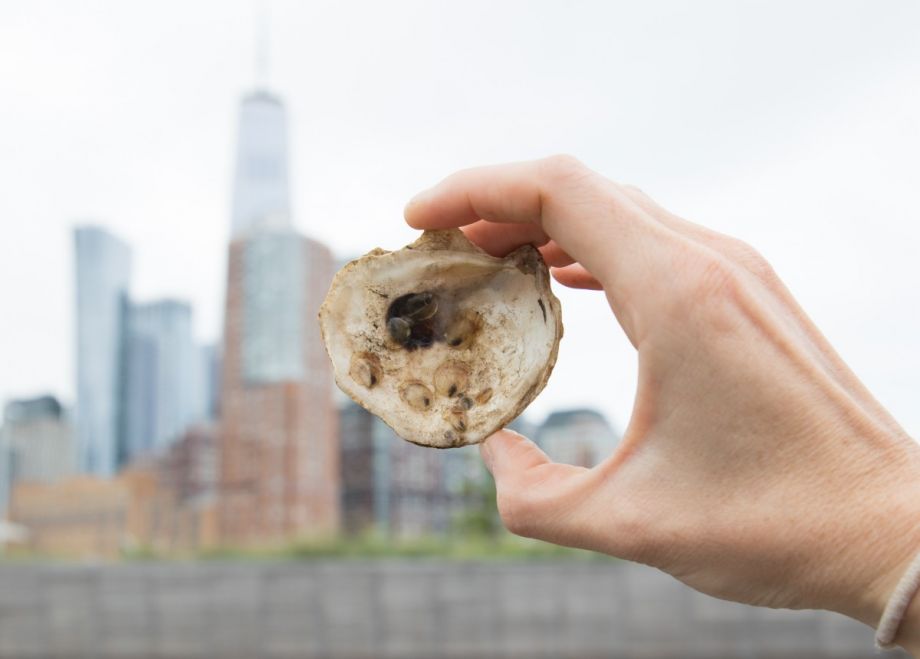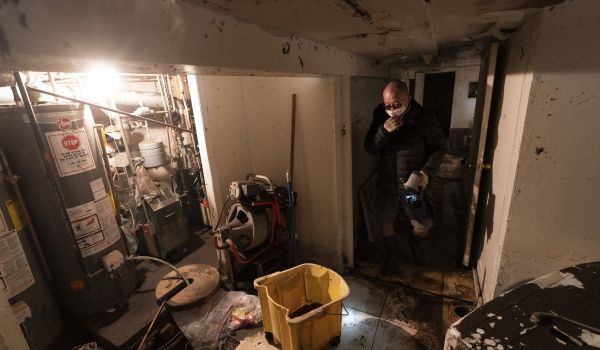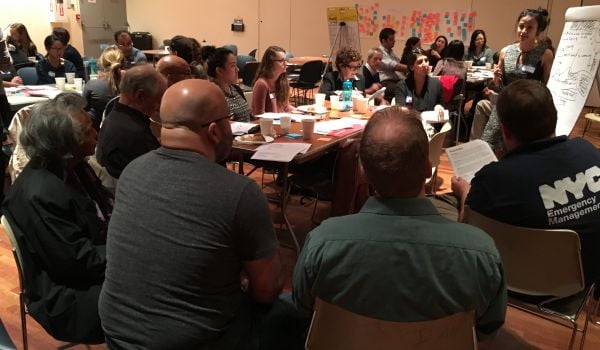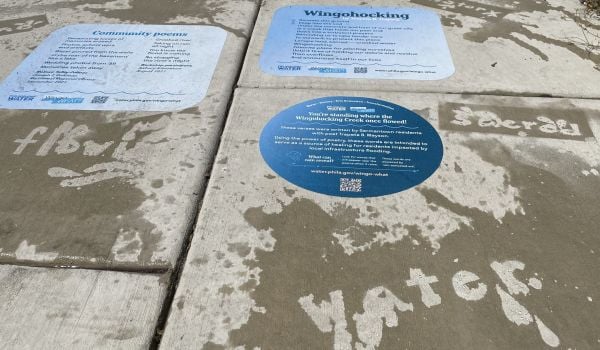The waterways around New York City once teemed with oyster reefs. Oysters were so plentiful — the reefs supposedly covered more than 200,000 acres — that they were sold on the city’s streets like hot dogs are today. But after years of overharvesting, pollution and waste in those waters, the reefs disappeared, with the last commercial oyster bed closed in 1927.
Today, less than .01 percent of the original oyster population remains in New York Harbor.
“New York City used to be the mecca for oysters,” says Carrie Roble, vice president of the River Project at the Hudson River Park Trust, which maintains a 400-acre estuarine sanctuary in the Hudson River along lower Manhattan. Oysters were “the original food cart,” she said, but they “lost their hold, literally, on our river bottom.”
The Hudson River Park Trust is one of several environmental groups trying to bring oysters back to New York. It recently added more than 11 million baby oysters to the Hudson River between Piers 26 and 34 near Tribeca. If these oysters survive and create self-sustaining reefs, they could help improve the river’s health and perhaps even protect Manhattan from storm surges.
Working with several partners (including the Billion Oyster Project, the Hudson River Foundation, Riverkeeper, and the State of New York), the Hudson River Park Trust created more than 200 artificial oyster habitats that are meant to mimic natural reefs. The baby oysters — called spat — were seeded onto shells collected from New York City restaurants. Those shells were then transferred to steel cages, concrete spheres and other structures, and they were placed in the Hudson River.
Instead of having to “start from right on the river bottom and the mud bottom, where it’s unlikely to support oyster survival,” these artificial habitats will “jump-start” the natural reef-building process, says Jim Lodge, senior scientist at the Hudson River Foundation.
The hope is that the oysters will grow “to the point where they reproduce,” Lodge adds. “Oysters like to settle on other oysters,” he says, and “over time, they grow into larger structures.”
The interest in restoring oysters to New York first arose more than a decade ago, when the waters around the city were recovering from decades of contamination and wild oysters were spotted on rocks and bridges. According to Allison Fitzgerald, an assistant professor at New Jersey City University and the New York Oyster Program Coordinator for NY/NJ Baykeeper, restoration efforts in New York — unlike those elsewhere in the country — were never focused on commercial goals. It was always about “the health of the harbor,” she says.
Scientists laud oysters for the environmental benefits they bring to the waters in which they live. “I like to joke that we ask so much from this little bivalve, our friend the oyster,” says Lodge.
“They’re a marvel,” says Roble.
One benefit is filtering and cleaning water. An adult oyster can filter up to 50 gallons of water a day. As they ingest water, they also take in bacteria, chemicals, pollutants and sediment that have contaminated or clouded the water.
“Anything that’s floating in the water, they suck in when they’re trying to get their food,” says Fitzgerald. “It’s like a vacuum cleaner.”
Oysters can also improve the biodiversity of a body of water. Many fish are born in or migrate through the Hudson River. Oyster reefs can help these fish — and other sea creatures — thrive, Roble says, because they can use the reefs as a nursery, feeding spot or a sanctuary from prey. “Many fish prefer feeding off of these reefs, compared to soft sediment,” Roble notes. “There’s a lot more protection.”
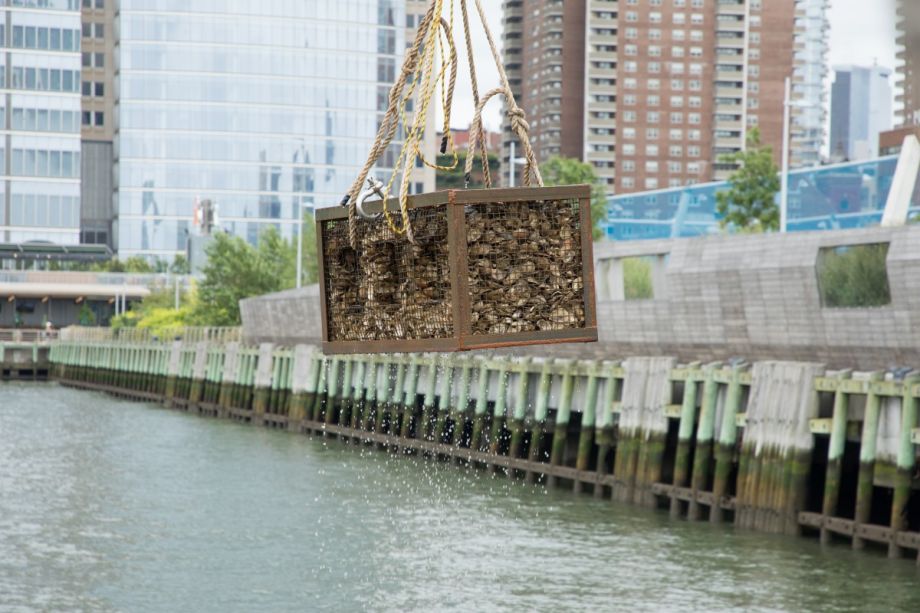
Artificial habitats will “jump-start” the oysters' natural reef-building process. (Photo courtesy of Hudson River Park Trust)
Perhaps most promisingly, oysters can act as a barrier to coastline flooding. The waters around New York have risen more than a foot over the last century, according to Roble, and their narrow channels can give rise to heightened waves during strong storms. The city was pummeled by Hurricane Sandy, which caused massive floods, including along much of Manhattan’s coastline. Such storms are expected to become only more frequent due to climate change.
After Sandy, “there seemed to be this awakening that New York City needed to think more collectively and more innovatively” about flood protection, Roble says. “After that point, I felt like every environmental group was learning and talking about the power of oysters.”
Although Manhattan has bulkheads that can block waves as they slam into the coastline, Fitzgerald says that Sandy showed the importance of also having nature-based barriers. Unlike bulkheads, oyster reefs can dissipate waves even before they reach the shore. As a result, “the pressure and strength of the wave are different” by the time they hit land, which allows for a “more gentle flooding,” Fitzgerald says.
“The “three-dimensionality” of reefs “slows down the wave energy as it moves over and through and around and up and over, kind of like a wiffle ball. It can’t just directly fly through, there’s ins and outs it has to go through,” says Roble.
Roble acknowledges that oyster reefs won’t prevent sea-level rise, nor will they single-handedly protect New York from flooding. They can, however, be a “really important piece of the puzzle in reducing flooding when we’re in those pretty scary storms,” she says.
Whether these benefits ultimately come to fruition in the Hudson River will depend on whether the baby oysters can reproduce in sufficient quantities. “It’s mostly just a numbers game,” says Lodge, adding that prior restoration projects around New York have shown some promising signs but have not yet clearly demonstrated that oysters can create self-sustaining reefs. It’s “challenging,” he says.
The restoration process in New York is still in the early stages. The Hudson River project encompasses just 10 acres, Roble says, and it’s a “bit of a pilot.” The oysters will be monitored and lessons applied to future projects. “We want to see what performs best over time.”
Roble is hopeful that, eventually, oysters can return to New York in significant numbers. “These oysters are very resilient. We have more and more reason to be optimistic that we can help.”
Beyond the environmental benefits that oysters themselves can offer, they also might help New Yorkers rally around the causes of clean water and action to fight climate change. There is value in “getting the community engaged in the restoration efforts themselves” because it’s important to impart the “value of protecting our shorelines,” Lodge says. Oysters are “one of our best tools for doing that.”

